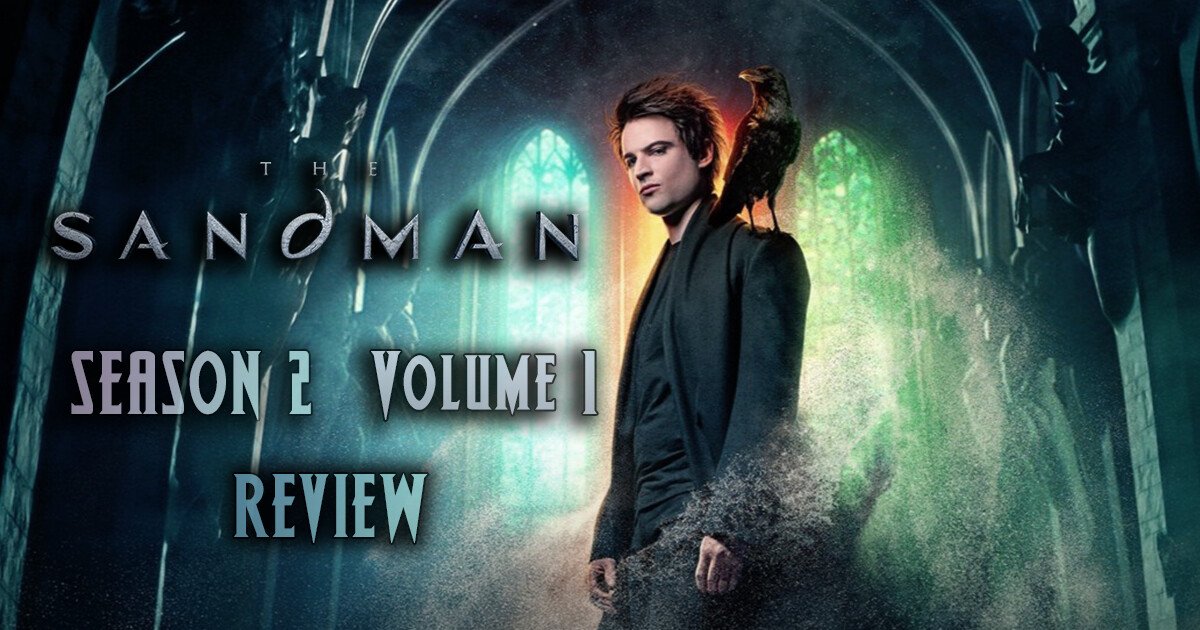Web Series
The Sandman season 2 reveals why even gods must beg for forgiveness before it’s too late…
Dream returns in Netflix’s The Sandman Season 2 Volume 1, and this time, he’s not just rebuilding a realm — he’s facing his biggest fears and deepest regrets

The Sandman is back on Netflix, and this time, it’s not about reclaiming power — it’s about reckoning with the past. Season 2, Volume 1 of this fantasy-horror juggernaut brings back Lord Morpheus, played with haunting gravity by Tom Sturridge, and throws him into a six-episode arc that is as emotionally intense as it is visually spellbinding.
After clawing his way back to power in Season 1, Dream, also known as Morpheus, makes the bold decision to tear it all down again. Why? To atone. To say sorry. To confront a past filled with abandonment, loss, and cruelty. The show’s creators have turned this installment into a sprawling, mythological family drama, where the Endless — personified versions of human concepts — clash not just with mortals, but with one another.
We meet more of Dream’s siblings in this volume. Alongside Death (Kirby Howell-Baptiste), Desire (Mason Alexander Park), and Despair (Donna Preston), Season 2 introduces Destiny (Adrian Lester), the chaotic Delirium (Esmé Creed-Miles), and the elusive Destruction (Barry Sloane), who walked away from his responsibilities eons ago. Their cosmic group therapy session is as beautiful as it is volatile.
The first half of this season splits into two arcs. The earlier episodes are a mythological banquet — literally. Dream opens his palace to a motley crew of gods, demons, and immortal beasts, each vying for control of Hell after Lucifer Morningstar (Gwendoline Christie) blesses and curses him in the same breath. It’s darkly funny, grotesque, and at times visually overwhelming — in the best possible way.
But underneath all the spectacle is heartache. Dream tries to rescue Nada (Deborah Oyelade), a former lover he once condemned to eternal suffering. That guilt spirals into deeper themes in the later episodes, where Delirium asks him to help find Destruction. What starts as a cosmic mystery becomes an introspective journey into Dream’s own emotional failings.
The writing, under showrunner Allan Heinberg, smartly weaves in classic short stories from Neil Gaiman’s legendary comics. Yes, the Shakespeare cameo and “A Midsummer Night’s Dream” adaptation are here, and they serve as elegant narrative flashbacks that deepen Dream’s arc rather than distract from it.
Yet, not everything lands perfectly. Characters like Nada and Wanda (Indya Moore), who should emotionally anchor the story, feel underdeveloped. The show moves quickly — perhaps too quickly — as it races toward a conclusion. Netflix confirmed that this is the final season, split in two volumes, and the urgency is palpable.
Still, the visuals are unmatched. The Sandman is one of the most distinctive-looking series on TV, with sprawling shots of dreamscapes, gothic castles, and ancient timelines including the French Revolution and ancient Greece. Dream’s ever-shifting castle becomes a character in itself — a metaphor for his fluid identity and unresolved guilt.
One standout moment: a 12,000-year-old man dies in a simple accident. Death greets him and says, “You lived a lifetime. No more, no less.” It’s this blend of eternal stakes and human fragility that makes The Sandman so powerful. Beneath all the gods and monsters, it’s still a story about making peace with your past.
-

 Entertainment1 week ago
Entertainment1 week agoDolly Parton delays Las Vegas concerts by nine months citing health challenges but promises unforgettable return
-

 Entertainment1 week ago
Entertainment1 week agoZoey Deutch engaged to comedian Jimmy Tatro after 4 years of dating with romantic beach proposal
-

 Sports4 days ago
Sports4 days ago‘Silent killer’ Cam Schlittler stuns Red Sox as Yankees rookie makes history with 12 strikeouts
-

 Politics1 week ago
Politics1 week agoBarack Obama blasts Trump over Tylenol autism claim calling it ‘violence against truth’ but that’s not all he said…
-

 Entertainment5 days ago
Entertainment5 days agoSurvivor Season 49 episode 2 shocker Kele tribe loses again and fans stunned by who went home
-

 Crime & Justice6 days ago
Crime & Justice6 days agoProsecutors demand 11 years for Diddy after shocking trial says Cassie’s testimony revealed dark truth
-

 Sports6 days ago
Sports6 days agoTottenham’s Champions League wake-up call… why Spurs must stop looking like a Europa League side
-

 Sports3 days ago
Sports3 days agoShohei Ohtani finally pitches in MLB playoffs after 2,746 days… will this be the moment that defines Dodgers vs Phillies?


















